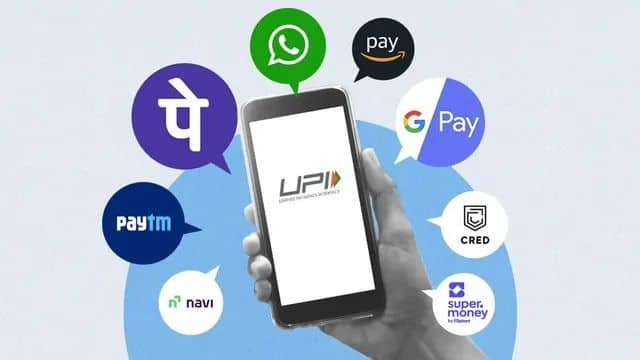
-- Shares Facebook Twitter Reddit Email On March 25, Andrew Nixon, director of communications at Health and Human Services, said “The COVID-19 pandemic is over, and HHS will no longer waste billions of taxpayer dollars responding to a non-existent pandemic that Americans moved on from years ago.” This is not a policy clarification. It’s a betrayal wrapped in spin.
While the White House justifies its clawback of $11.4 billion in public health funds by declaring the pandemic “over,” the truth — buried beneath rhetoric — is that this money was never solely about COVID. These funds were the only significant investments in behavioral health infrastructure in a generation, targeting deeply underfunded mental health and substance use services long before and long after the virus.

Related Masks off: The lessons we didn't learn from COVID According to the 2025 SAMHSA Congressional Justification report , much of the rescinded funding supported: The 988 Suicide & Crisis Lifeline State and Tribal Opioid Response Grants for overdose treatment and harm reduction Behavioral health programs serving children, LGBTQ+ youth, and rural communities Community mental health systems and workforce development initiatives These were not “emergency pandemic tools.” They were lifelines — a fragile but vital safety net for communities devastated by opioids, trauma, suicide and structural neglect. To erase that with one sentence is not just dishonest.
It’s inhumane. Calling COVID “non-existent” is more than false — it is gaslighting on a national scale. But the clawbacks were only the beginning.
Just two days later, on March 27, HHS Secretary Robert F. Kennedy Jr. ordered the layoffs of 10,000 federal health workers, slashing the agency’s workforce from 82,000 to 62,000 as part of a sweeping Trump administration effort to “streamline” federal health authorities.
Among the workers cut were specialists in maternal health, food safety, and infectious disease prevention, as well as entire review units within the FDA. The plan will also consolidate 28 HHS divisions into just 15, including the creation of a new ideologically driven super-agency: the Administration for a Healthy America, a centerpiece of Kennedy’s “ Make America Healthy Again ” agenda focused on chronic disease rather than equitable public health. This isn’t a policy pivot.
It’s a paradigm shift — one that openly seeks to defund and depoliticize science-based public health systems, while reframing chronic illness as a moral crisis and individual failing. The language of erasure and the great defunding of vulnerability Calling COVID “non-existent” is more than false — it is gaslighting on a national scale. As of March 2025, the CDC still reports hundreds of COVID-related deaths weekly, with long COVID disabling up to 15% of those infected — including working-age adults.
Want more health and science stories in your inbox? Subscribe to Salon's weekly newsletter Lab Notes . The HHS statement serves as rhetorical camouflage, designed to ignite fatigue and resentment among voters who want to “move on.” But what they’re being told to move on from is mental health access for their children, lifesaving treatment for opioid addiction, and suicide prevention for LGBTQ+ teens.
Among the first casualties of the federal clawback include HIV outreach and PrEP promotion; vaccine misinformation and public health communication research; behavioral health programs targeting Black, Indigenous and LGBTQ+ populations; and crisis response services in tribal, rural and low-income communities. This is not fiscal discipline. It is calculated abandonment of those least able to recover without support.
The false math of the fentanyl pivot To justify this sweeping reallocation, the administration invoked a new economic estimate: $2.7 trillion in annual costs from illicit fentanyl. While the opioid overdose crisis is real and tragic, the math used here is economically questionable and politically convenient, first by using an inflated valuation of death.
The estimate applies a $13 million value of a statistical life (VSL) to each overdose death, derived from a 2017 NIH figure adjusted for inflation. While VSL is legitimate for regulatory analysis, applying it uniformly to overdose deaths without regard to age, socioeconomic status, or employment introduces methodological bias. It also uses stacked categories and double counting.
Specifically, the $2.7 trillion estimate includes: $1.1 trillion for lives lost; $1.
34 trillion for reduced quality of life; and $277 billion in healthcare, productivity and criminal justice costs. This triple-counting occurs when the same losses — such as missed wages, hospital bills, and suffering — are priced multiple times under different labels. Both the VSL and QALY (quality-adjusted life year) frameworks already incorporate economic productivity and health care costs.
Adding those again under a separate heading inflates the total far beyond what public health economists or agencies like the CDC would report. What the real cost likely is If we correct for overlap and apply conservative VSL values or QALY-based models without stacking them, most peer-reviewed studies estimate the true economic burden of the opioid epidemic in the range of $500 billion to $800 billion annually, not $2.7 trillion.
That’s still devastating — but it also reveals the administration’s number to be 3 to 5 times higher than best-practice estimates, weaponized rhetorically to gut public health programs that have nothing to do with opioids. Following these false equivalencies, the administration then compares opioid losses to the 0.4% GDP drag from tariffs, implying the former is categorically worse.
But this is economic sleight-of-hand: tariffs impact macroeconomic trade flow, while opioid costs are microeconomic and mostly internalized losses — these are not comparable categories. Exploiting one crisis to bury another There’s no question the fentanyl crisis is urgent . But the administration’s decision to dismantle COVID-era programs — which were finally beginning to deliver real infrastructure for behavioral health — means they are choosing to rob Peter to pay Paul.
We need your help to stay independent Subscribe today to support Salon's progressive journalism Instead of expanding the toolkit, they’re discarding some of the only tools that work for underserved populations. Legal and policy pushback ahead? This move is unlikely to go unchallenged. Legal experts suggest that civil rights groups could argue Title VI violations due to disparate impact on LGBTQ+ populations and people of color.
State attorneys general may also file claims under the Administrative Procedure Act if grant terminations occurred without required rulemaking and states that committed funds based on multi-year agreements could sue for breach of reliance or grant assurances. On April 1, 2025, 25 states and the District of Columbia filed a federal lawsuit against HHS and Secretary Robert F. Kennedy Jr.
in the U.S. District Court for Rhode Island, seeking to block the clawback of $11 billion in public health funds.
The suit challenges the terminations under the Administrative Procedure Act and requests emergency injunctive relief. While it’s a critical step forward, the complaint missed opportunities to include a Title VI and ADA disparate impact claim, which could form the basis for future civil rights intervention, and declarations from clinicians, youth, tribal leaders, and social workers that could humanize the harm in support of injunctive relief. These omissions don’t diminish the case’s value — but they leave room for others to build on what’s begun Compassion is not a COVID line item These cuts and attacks on public health aren’t about bureaucratic bookkeeping.
It’s about whose lives matter enough to fund. The administration has chosen a cynical path: leveraging pandemic fatigue to erase programs that were finally beginning to undo decades of public health neglect. To call that “recovery” is an insult to every community still grieving, struggling, or dying for lack of care.
This was never just COVID money — it was hope. And this policy kills it. Read more about public health Why people with ADHD and autism fear stigma will get worse under Trump and RFK Jr.
As the Trump admin deletes online data, scientists and digital librarians rush to save it How the "wallet test" shows our need for a social safety net By Claire Zagorski Claire Zagorski, MSc, LP, is a licensed paramedic, and a graduate research assistant and PhD student in translational science at The University of Texas at Austin. She studies illicit drug supply contamination and composition, and drug checking implementation. MORE FROM Claire Zagorski By Chad Sabora Chad Sabora, JD, is a harm reduction and drug policy expert, former attorney and national policy advisor on substance use and public health.
MORE FROM Chad Sabora Related Topics ------------------------------------------ Analysis Covid-19 Fentanyl Opioid Crisis Public Health Trump Related Articles Advertisement:.















